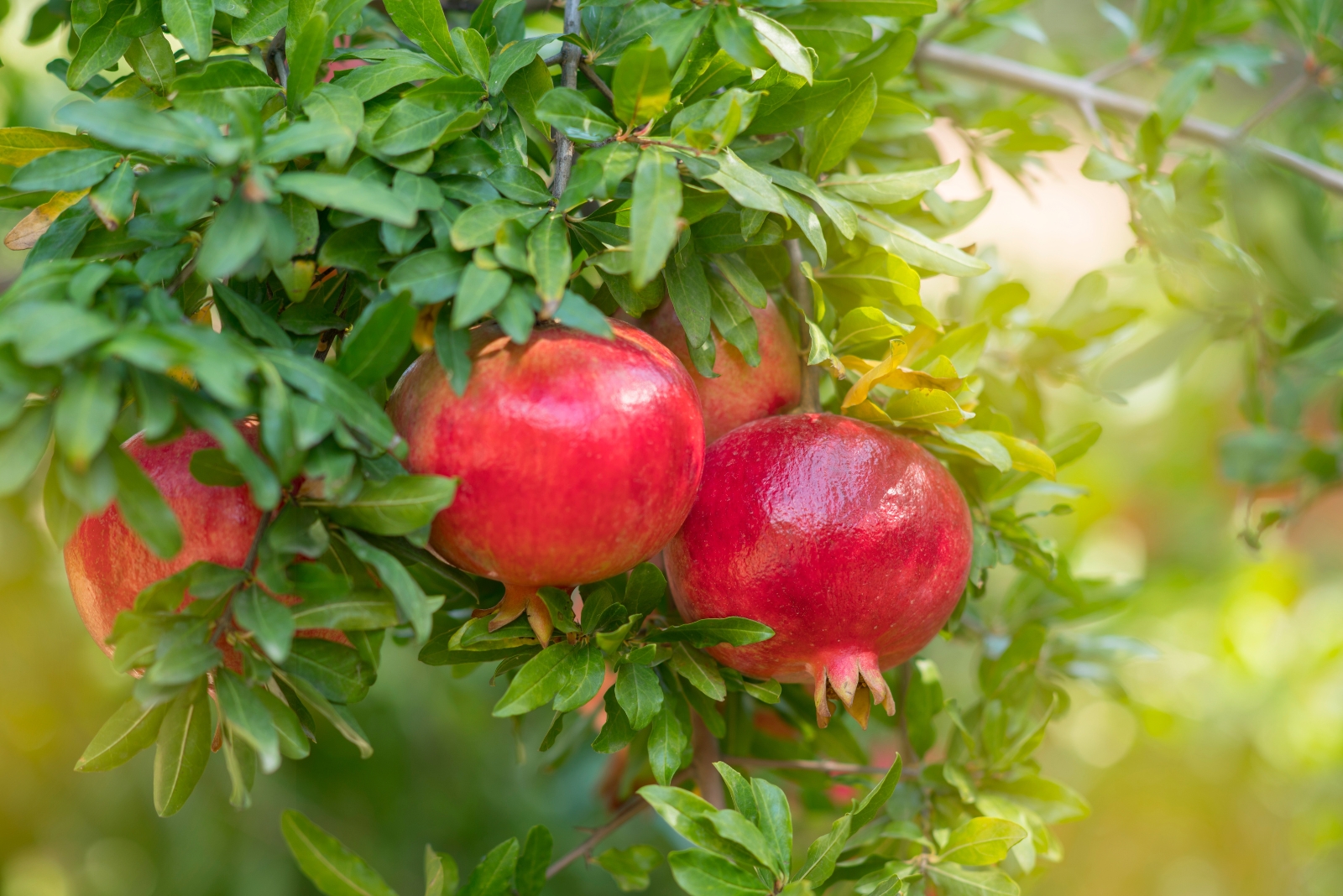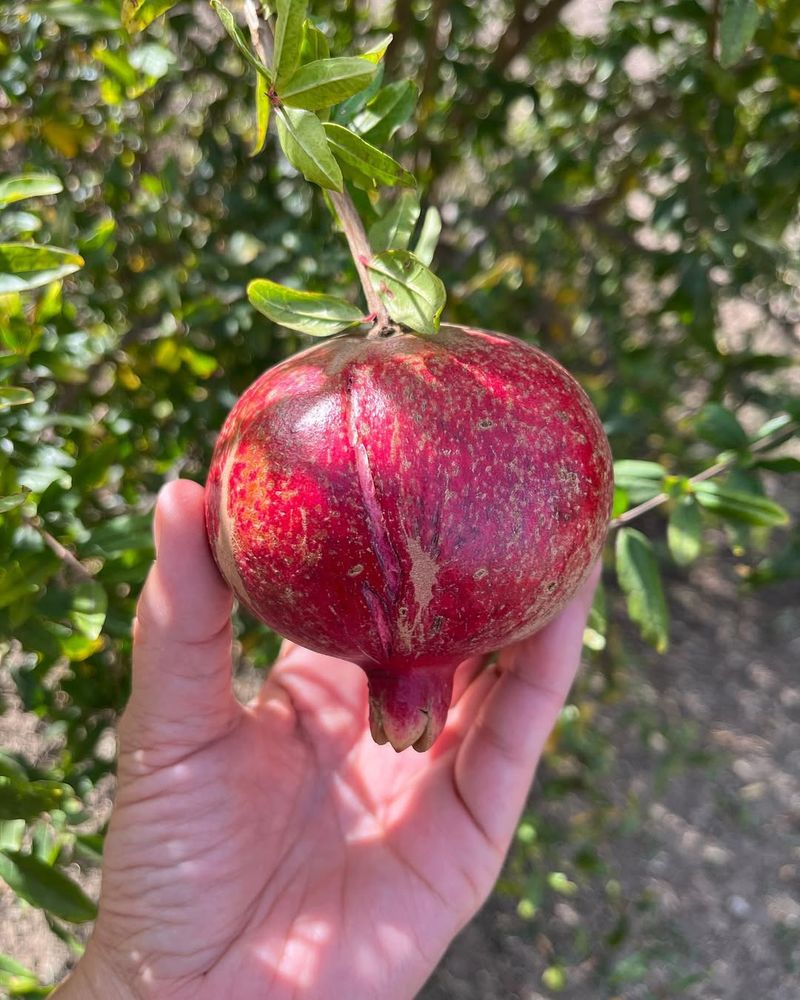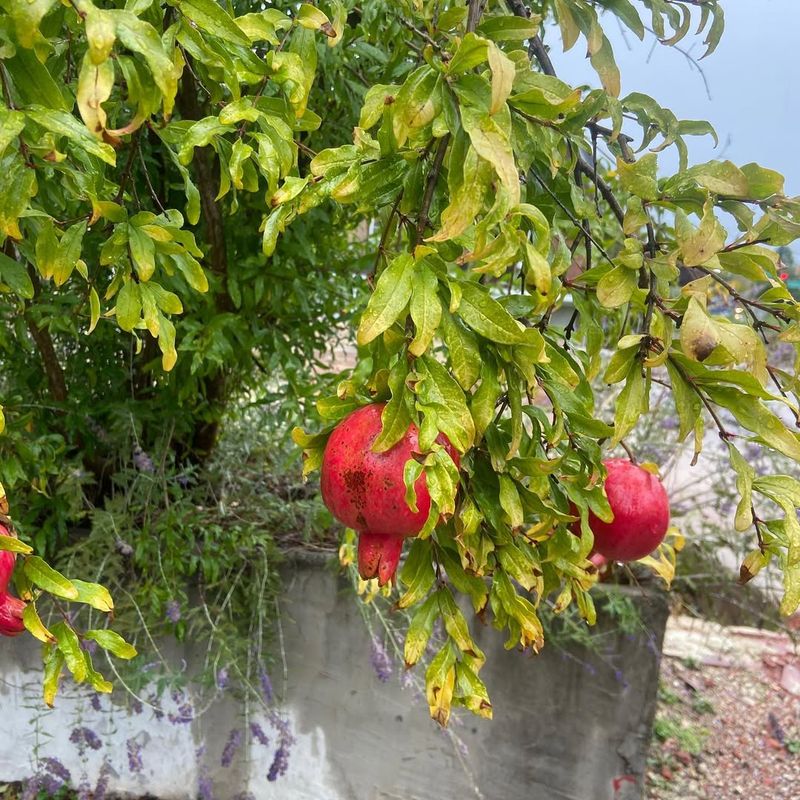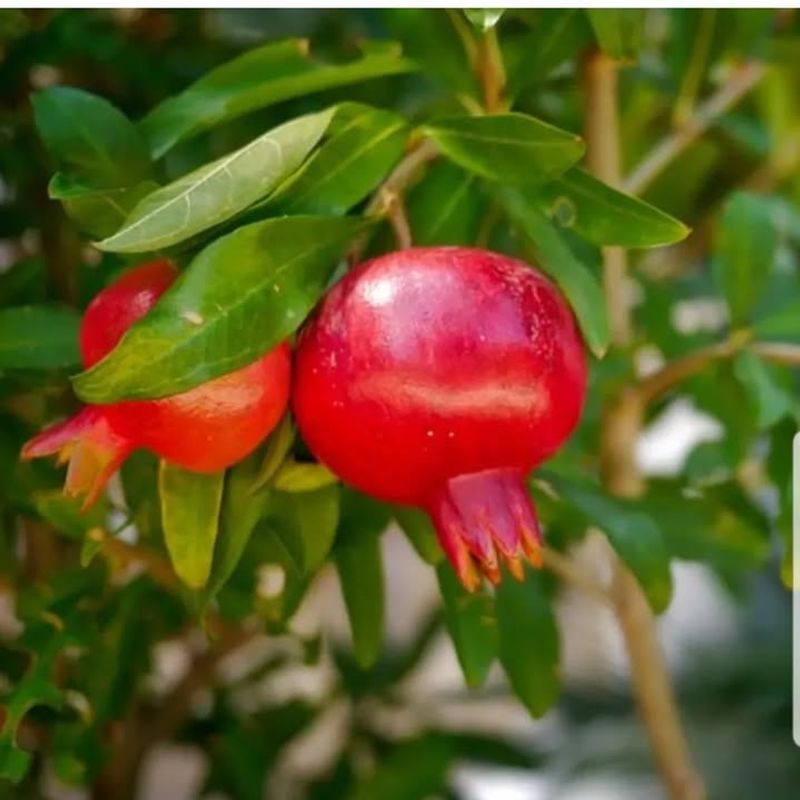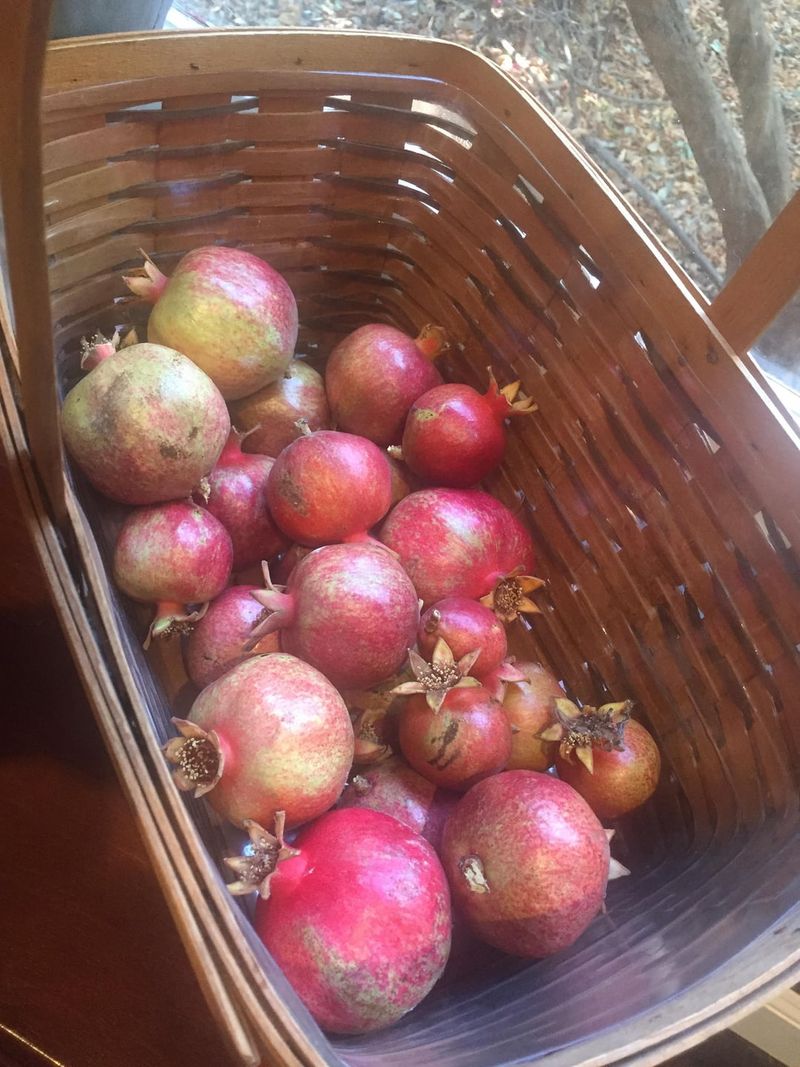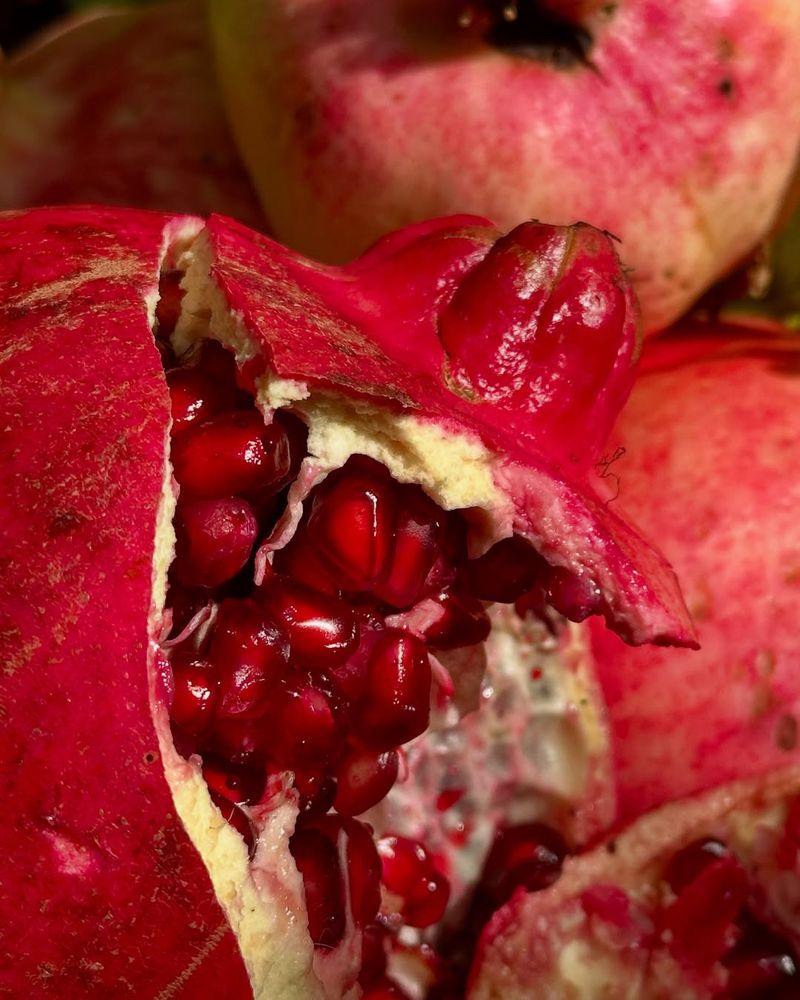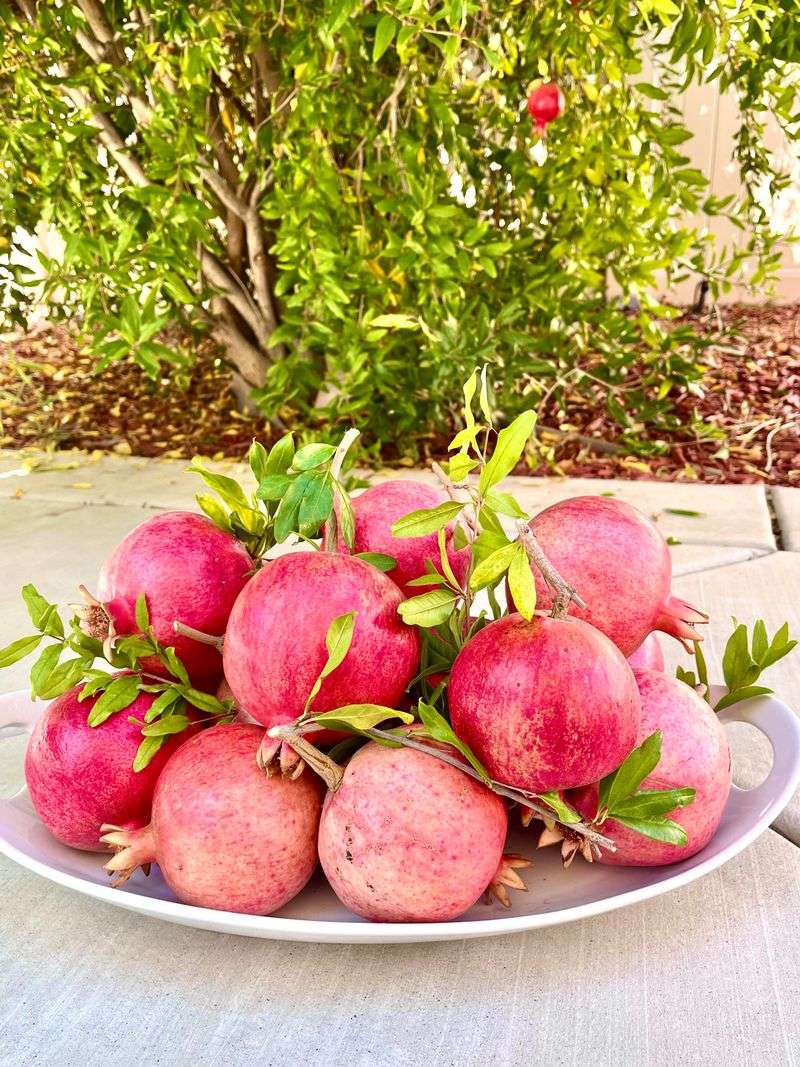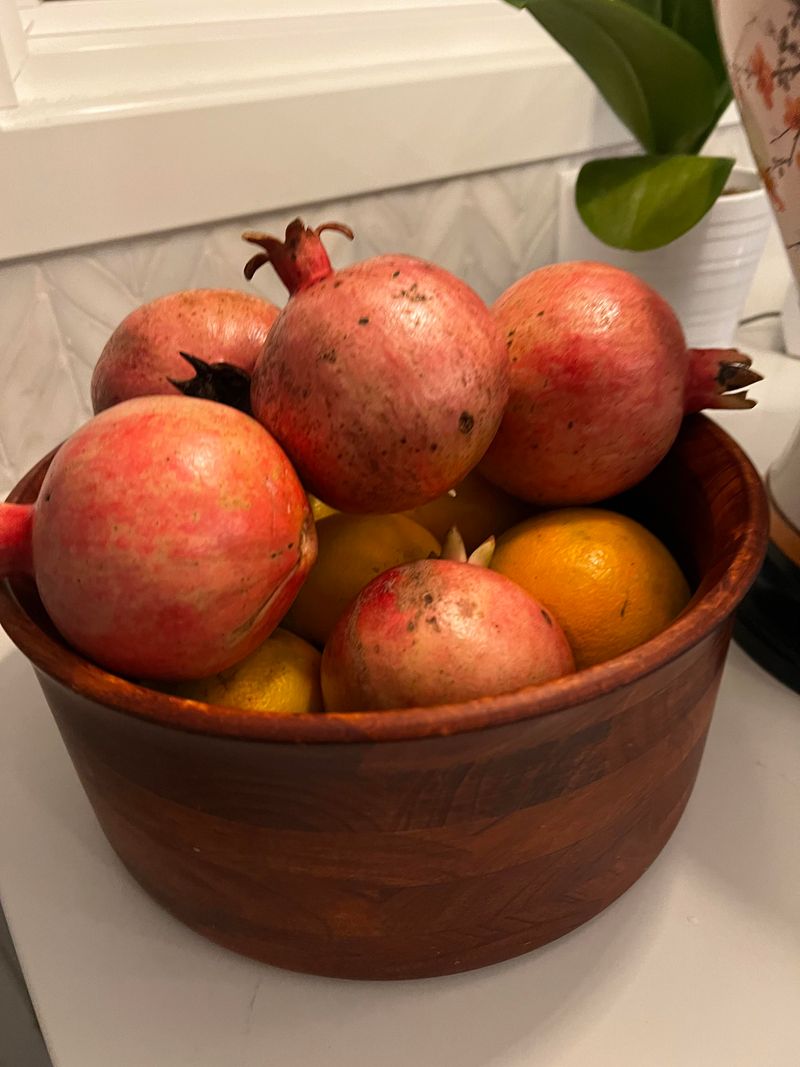Growing pomegranates in Georgia can be incredibly rewarding, especially when you pick them at just the right time. Knowing when and how to harvest these ruby-red fruits makes all the difference between a tart disappointment and a sweet, juicy treat.
If you’re a first-time grower or a seasoned gardener, these helpful tips will guide you to the best-tasting pomegranates your backyard has to offer.
1. Wait Until Late September Through November
Georgia’s climate means pomegranates ripen best during fall months. Most varieties reach peak sweetness between late September and November, depending on your exact location and weather patterns that year.
Picking too early results in sour fruit that hasn’t developed full flavor. Watch your calendar and start checking your pomegranates as autumn settles in. Patience pays off with incredibly sweet rewards worth the wait.
2. Check The Color And Shape Changes
Pomegranates signal readiness through visual cues you can spot easily. Look for deep, rich color—usually red or reddish-pink—that replaces any green tones on the skin.
The fruit’s shape also shifts from perfectly round to slightly squared or angular as it matures. These changes happen gradually, so examine your pomegranates every few days. When the transformation is complete, your fruit is ready for picking and enjoying.
3. Listen For A Metallic Sound When Tapped
Here’s a fun trick experienced growers use: gently tap the pomegranate with your finger. Ripe fruit produces a metallic, almost hollow sound rather than a dull thud.
This happens because the arils inside have plumped up with juice, creating air pockets between them and the rind. Underripe pomegranates sound solid and flat when tapped. Try this test on several fruits to train your ear for the perfect harvest sound.
4. Use Sharp Pruning Shears For Clean Cuts
Never twist or pull pomegranates from the branch, as this damages both fruit and tree. Instead, grab quality pruning shears or garden scissors for the job.
Cut the stem about half an inch above the fruit’s crown, making one clean snip. This method prevents tearing the bark and keeps your tree healthy for future harvests. Clean tools also reduce the risk of spreading disease between plants in your Georgia garden.
5. Harvest Before Heavy Rains Or Frost
Georgia weather can be unpredictable during harvest season. Heavy rainfall causes ripe pomegranates to split open on the tree, ruining the fruit and attracting pests.
Early frost can damage the delicate arils inside, turning them mushy and unappetizing. Check weather forecasts regularly during harvest time. If storms or freezing temperatures are predicted, pick your ripe pomegranates immediately, even if you planned to wait another day or two.
6. Handle Gently To Avoid Bruising The Skin
Pomegranate skin bruises easily despite appearing tough and leathery. Bruised areas break down quickly, leading to mold and spoilage within days of harvest.
Place each fruit carefully into your basket rather than tossing them in carelessly. Avoid stacking too many on top of each other during transport from tree to kitchen. Gentle handling preserves quality and extends storage time, letting you enjoy fresh pomegranates from your Georgia garden for weeks after picking.
7. Store In Cool, Dry Place After Picking
Proper storage keeps your Georgia pomegranates fresh and flavorful for months. Room temperature works for a week or two, but refrigeration extends life significantly.
Keep them in your fridge’s crisper drawer where they’ll stay fresh for up to two months. Avoid humid environments that encourage mold growth. For longest storage, choose unblemished fruits without cuts or soft spots. Properly stored pomegranates maintain their sweet, tangy flavor throughout winter.

